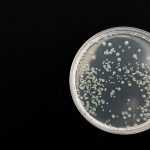Researchers in the Food Technology department at the University of Zaragoza in Spain have explored the use of UV light to inactivate the most difficult form that bacteria survive as- spores (Gayán et al., 2013). Destroying bacterial spores is essential for food preservation and UV light inactivation is a valuable non-thermal method where heat is not possible to employ.
UV light treatment of water (Hijnen et al., 2006) and surfaces is relatively commonplace but application to liquids has attracted interest because of its high lethality, non-thermal nature and does not create notable chemical changes in the product. Bacterial spores are most susceptible to destruction by UV-C radiation from 200 to 280nm wavelength. Bipyrimidine dimmers are produced within DNA at this wavelength which disrupts replication. Spores are generally resistant to UV damage compared to vegetative cells because they have an altered DNA conformation, the A-form, which is protected by small acid-soluble proteins. A highly effective DNA repair system, the presence of large amounts of dipicolinic acid and a thick spore protein coat also provide resistance (Setlow, 2006).
The study combined UV and mild heating simultaneously or in sequence on various food spoilage organisms such as Bacillus coagulans, B. cereus, B. stearothermophilus and Alicyclobacillus acidocaldarius. The most heat resistant species B. stearothermophilus was the most sensitive to UV light damage. Increasing the temperature of processing to 60 °C helped destroy the spores of the most resistant organism B. coagulans. The researchers used an annular thin film flow-through reactor developed specifically for such studies and a TUV 8WT5 bulb (Phillips, USA) providing the UV light. Only liquids though of a high absorptivity were suitable for such treatment.
References
Gayán, E., Álvarez, I. Condón, S. (2013) Inactivation of bacterial Spores By UV-C Light. Innov. Food Sci. Emerg. Technol. 19 (July) pp.140-145
Hijnen, WAM., Beerendonk, EF., Medema, G.J. (2006) Inactivation credit of UV radiation for viruses, bacteria and protozoan (oo)cysts in water: A review. Water Res., 40 pp. 3-22
Setlow, P. (2006) Spores of Bacillus subtilis: their resistance to and killing by radiation, heat and chemicals. J. Appl. Microbiol. 101 (3) pp. 514-525

Leave a Reply